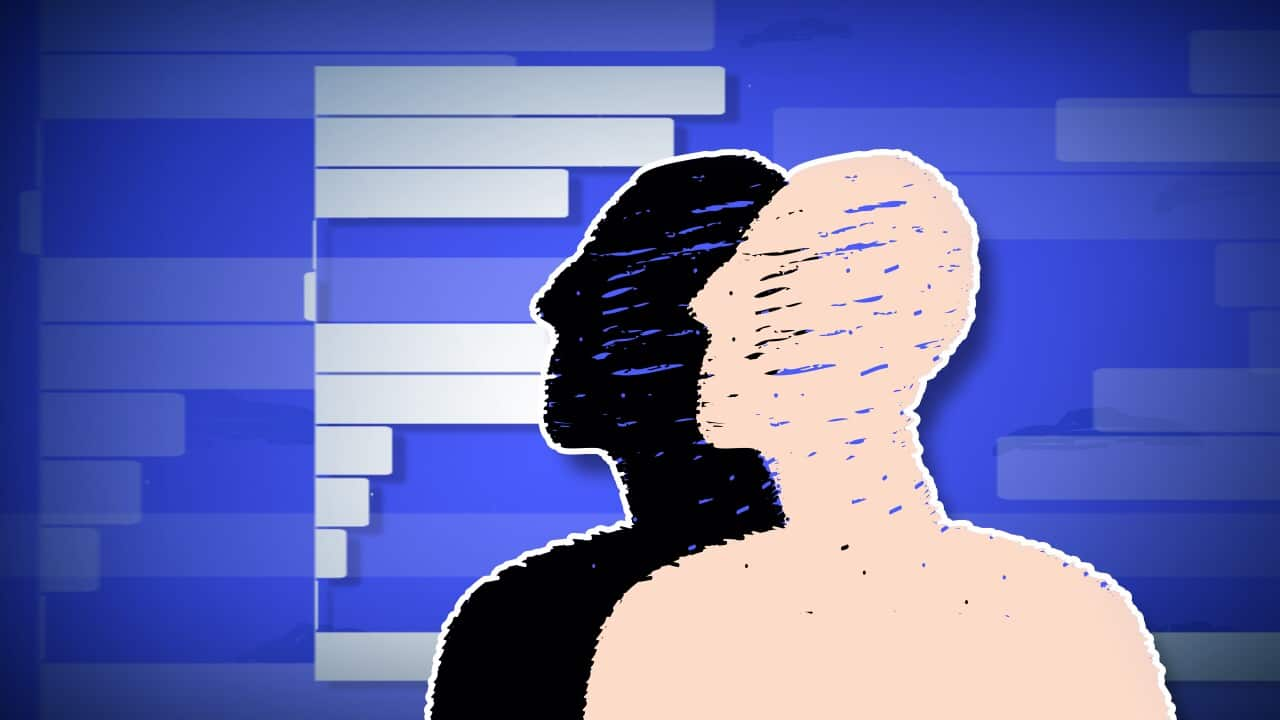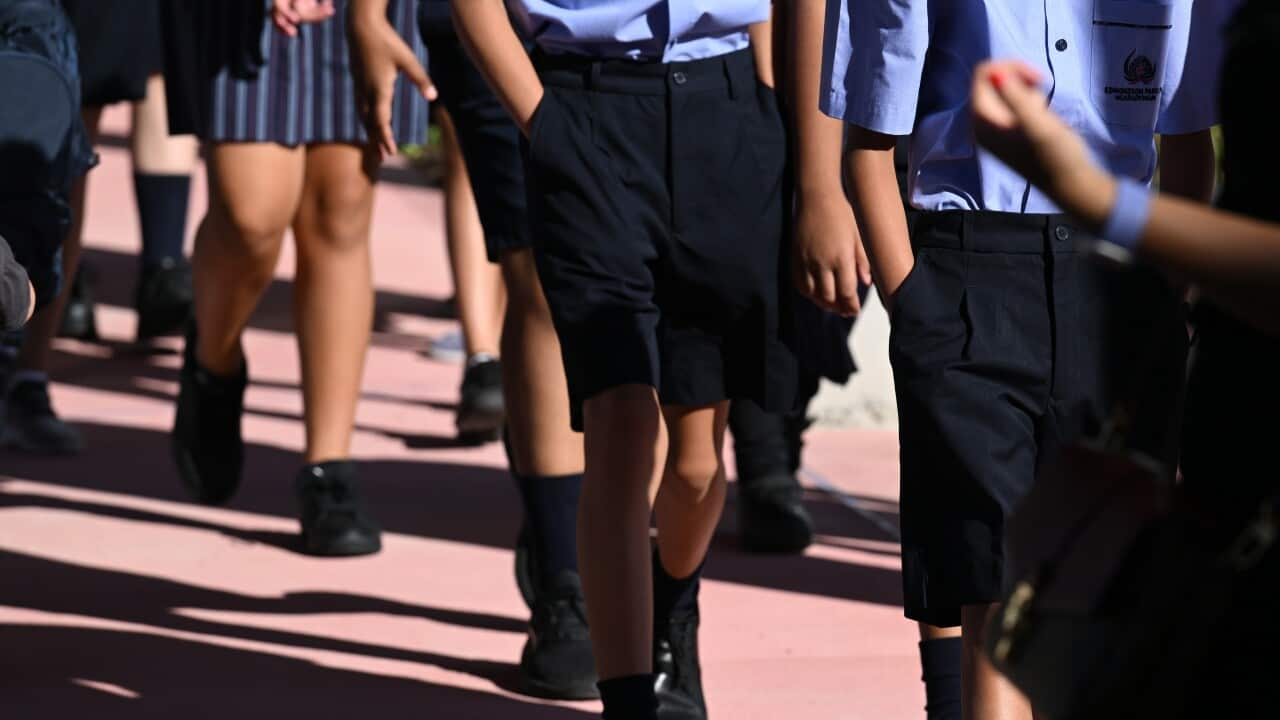Decades after Fiona Cornforth gave birth to her first child, the trauma of her delivery room experience is still fresh in her mind.
The Wuthathi descendant wanted her mother and sister in the hospital room with her but was told she had to choose — one or the other.
It was never explained to her why this was necessary.
"There were other people giving birth in rooms next to me with them with their whole families," Cornforth told SBS News.
She said requests from her mum, who had given birth to four children and who was already a grandmother, were also dismissed.
"She was talking about what I needed, advocating for me, and she was told to shut up at one point," Cornforth said. "And that made the whole experience much more distressing."
Cornforth, who refused to return to the hospital to have her second child despite receiving an apology, puts her experience down to "blatant" racism, something that is increasingly being acknowledged as a possible factor in the persistent health gap between First Nations and non-Indigenous Australians.
Racism is not included in the list of 11 factors measured by the Australian Institute of Health and Welfare (AIHW) as a potential contributor to that health gap.
But there is growing acknowledgement that ways of measuring the impact of racism on people's health need to be found.
Evidence supports racism's impact on health
The mental health impact of racism has been highlighted in the Mayi Kuwayu Study, the largest national study of Aboriginal and Torres Strait Islander culture, health and wellbeing.
Australian National University (ANU) epidemiologist Professor Raymond Lovett, who is director of the study, said researchers had looked at exposure to everyday racial discrimination and how much it contributed to the difference in high psychological distress in Indigenous and non-Indigenous people.
"[Almost] 50 per cent of the gap in levels of high psychological distress would disappear if we removed racism as a factor," Lovett told SBS News.
"It should be considered as one of the risk factors in any analysis like [the AIHW report], where [they're] trying to understand what's contributing to the gap."
Some don't want to acknowledge racism as an issue
The findings of the peer-reviewed Mayi Kuwayu study were published in the respected medical journal Lancet in 2022.
But Lovett said having a conversation about racism and including it in national health measures was difficult politically because some people didn't want to acknowledge that racism was an issue in Australia.
"Ten years ago you couldn't even mention the word [racism]. Today you can say it but people are still very uncomfortable and defensive about it," he said.
But he said the impact of racism was real and the study quantified it.
"Getting to a place where that's acknowledged is extremely important ... then you can start to do things about it," he said.
"We're not even quite in that stage where we're willing to acknowledge it.
"So we can't close those gaps even further if we're not willing to understand how it contributes."
Racism doesn't just impact individuals
University of Queensland epidemiologist Professor James Ward, who is the director of the Poche Centre for Indigenous Health at the university, agrees that authorities need to get better at quantifying the impact of racism on people's health.
"Particularly for First Nations peoples but also for other people who migrated to Australia from non-English speaking communities and backgrounds," he said.
He said the impact of racism could be significant as it could be present in all facets of life, whether it be on sporting fields, in workplaces or schools; affecting not just the individual, but also the mental health of their families and the community.
"When one of our football players or one of our leaders experience racism, we all feel it," Ward, a Pitjantjatjara and Narungga man, said.
"We feel bad for the person, we also feel bad for their immediate family, we also feel bad for the community they belong to [and we also feel] this reflects on all of us.
"[We think] if they can say that [about a person] at that level, then they think that of all of us."
He also believes the response should not just be limited to the healthcare sector.
"I think we have to get much better at implementing anti-racism strategies across the whole of Australian society," he said.
The 'vicious cycle' of racism can impact on many levels
Lovett said racism could be "pervasive" and sometimes led to a "vicious cycle".
He said Aboriginal and Torres Stait Islander people historically had to fight stereotypes that they were not able to be educated as easily as others, and expectations of their children still sometimes remained low. This could then impact job prospects and their future income.
Lovett said taking care of health was much harder for those who were poor and could not afford good medical care, or to buy fruit and vegetables.
He also pointed to the historical use of tobacco as a staple provided as wages up until the 1970s, and which had been "systematically embedded within the population".
Smoking is estimated to make up 13 per cent of the health gap, although rates are declining.
Aboriginal and Torres Strait Islanders exposed to high levels of racism were also five times more likely to engage in harmful and risky use of alcohol, he said.
"We think that that's a coping mechanism."
One-third of the health gap is 'unexplained'
The impact of racism is currently not measured by the AIHW in its biennial scorecard on Australia's health.
The 2024 report estimated there was a 24 percentage point health gap between Indigenous and non-Indigenous Australians in 2017-2019.
Social determinants such as employment, household income and level of education, are believed to contribute to around 35.4 per cent of this gap.
Another 29.1 per cent is attributed to health risk factors such as smoking, weight, exercise, binge drinking, and fruit and vegetable consumption.
But a significant proportion of the gap — 35 per cent — is "unexplained".

The AIHW measures the impact of several factors on the health gap between First Nations and non-Indigenous Australians, but one-third of the gap is unexplained. Source: SBS News
A spokesman for the AIHW told SBS News these factors were "likely to impact the health gap" but could not be measured using data they received from the 2018-19 National Aboriginal and Torres Strait Islander Health Survey (NATSIHS).
"Also, as the analysis is focused on the health gap, we need the same set of variables available in the corresponding total Australian population survey," he said.
The spokesman said the agency is investigating the impact of racism on health outcomes, with the intention of including racism as a risk factor in the next First Nations burden of disease study.
"If the data quality supports that analysis, results from the study would be available in 2026," he said.
Closing the Gap target is not on track
The does mention racism, and noted that it can increase risks of anxiety, depression, self-harm, asthma, a higher Body Mass Index, smoking and death by suicide.
It also pointed out that racism could affect antenatal care because many Aboriginal and Torres Strait Islander mothers fear their baby will be removed from them by child protection.
The Productivity Commission, which produced the report, found the target to close the life expectancy gap by 2031 was not on track to be achieved, although it had improved.
Non-Indigenous men born in 2020-22 are expected to live around eight years longer than Aboriginal and Torres Strait Islander men, who have a life expectancy of 71.9 years.
It was a similar gap for First Nations women, who were expected to live to 75.6 years.
Of particular concern was an increase in the rate of deaths by suicide, with 212 First Nations people dying in 2022 from suicide in five states and territories, compared to 174 in 2018.
The Commission also noted data showing 60 per cent of Aboriginal and Torres Strait Islander people aged 18 years or over had reported experiencing racial prejudice in the past six months in 2022, an increase from 43 per cent in 2018.
Among the general community, the levels were much lower, with 25 per cent reportedly experiencing racial prejudice over the same period, up from 20 per cent in 2018.
Work needed to tackle unconscious bias
Selwyn Button is Indigenous Policy Evaluation Commissioner at the Productivity Commission. He agreed there was a need for more discussion about the impact of things like racism on health, and studies like Mayi Kuwayu had quantified the difference it could make.
He said one of the priority reforms, which seeks to transform government organisations, aims to address this racism.
"Transforming government agencies is about addressing racism, it's actually about addressing unconscious bias," he told SBS News.

Reducing racism will help First Nations people feel more comfortable using health services. Source: Getty / Halfpoint Images
It's hoped programs like this will reduce hesitancy among Indigenous people to use public hospitals due to fears they won't get the best care or that it's not a culturally safe place for them, as well as the occurrence of patients discharging themselves from hospital against medical advice.
Button said progress reports on Closing the Gap were making it clear that it would take significant work to make progress on the targets.
"What we're seeing is where the pockets of success are being achieved, it's very much about government and community organisations sitting at the table together, and government giving up power, and certainly empowering community organisations to implement their own community-led decisions, and community-led initiatives."
Every 'kind and warm interaction' makes a difference
Cornforth's daughter is about to graduate as a midwife and is using the story of her mum's traumatic birth experience to help her colleagues understand the experiences of Indigenous Australians.
"My daughter has been able to share that story with a lot of her classmates so that that same traumatic experience isn't allowed to happen under their watch," she said.
Cornforth, who is head of ANU's National Centre for Aboriginal and Torres Strait Islander Wellbeing Research, said organisations need to address the trauma in Indigenous communities, and to ensure they were looking at what "harms" and what "heals" people.
She said the extent of the harm that had occurred in the past was significant, pointing out that around half the Aboriginal population in Western Australia had been taken from their families, or had a parent that was.
Harming behaviour could come from those who believed Aboriginal and Torres Strait Islander people shouldn't receive any different or special treatment, she said.
Cornforth says it's important Elders in health settings are taken care of and treated with respect because every "kind and warm interaction" an Indigenous person experienced would help ensure they kept coming back.
"Once they're re-traumatised or triggered by experiences in that setting then you risk losing them, and they may never come back."
Readers seeking support can contact Lifeline crisis support on 13 11 14, visit or find an . Resources for young Aboriginal and Torres Strait Islanders can be found at .












